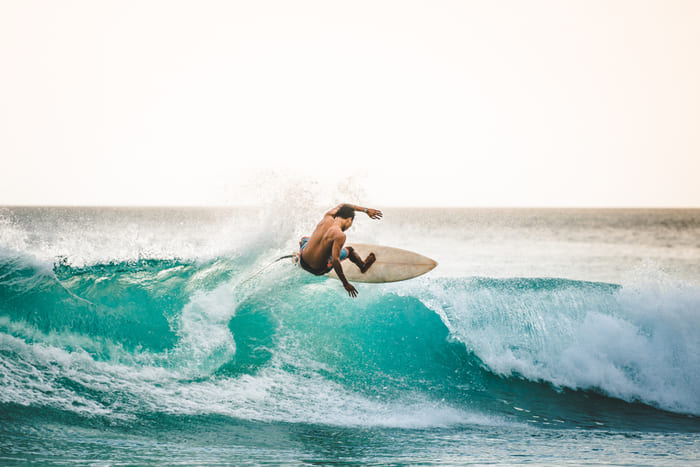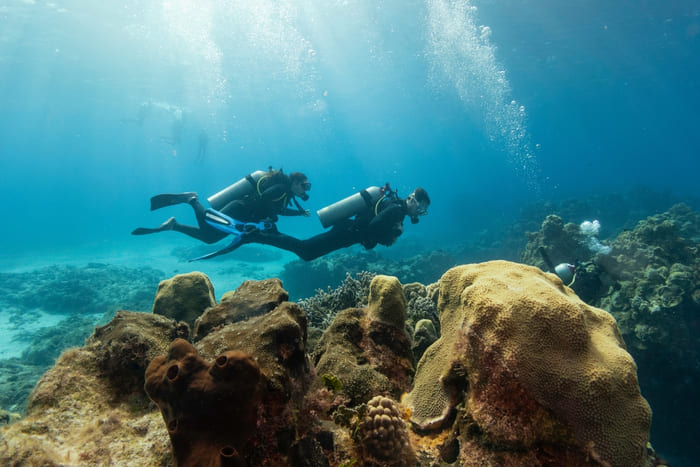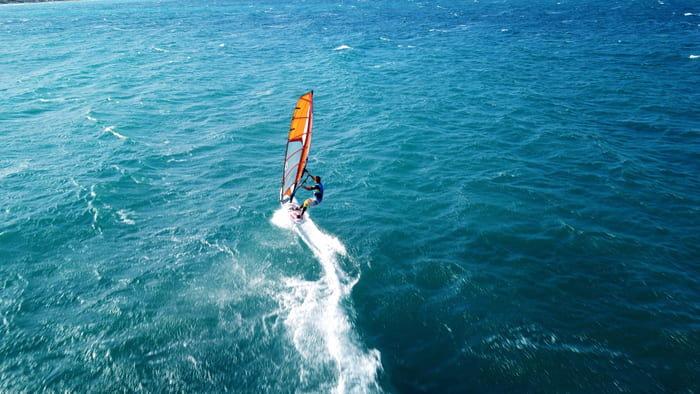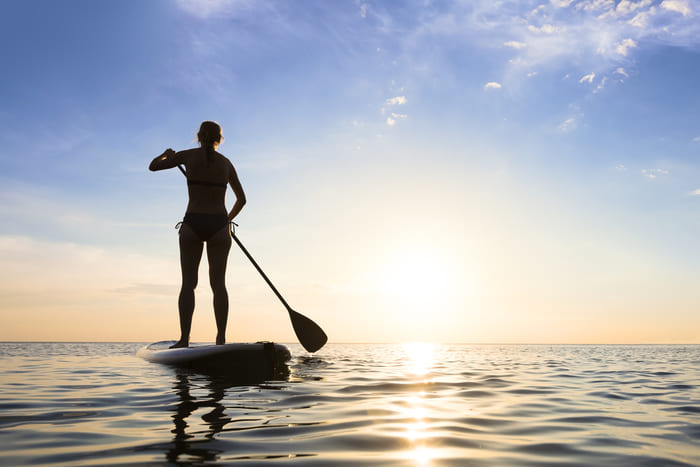Sea Sports
View Contents
ToggleIt is undeniable that one of the great attractions of Tenerife is its sea. It is possible to practise a multitude of sports, some require strong winds, others require calm seas, but there is a place for all of them on this island.
Surf
Tenerife, an island blessed with extensive coastlines and consistent waves, is a standout destination for surf enthusiasts. From beginners to professionals, the varied surfing conditions Tenerife offers make it an ideal spot for all levels. Here’s a guide through the best beaches for surfing, the best time of year to catch waves, and practical tips for surfers.

Tenerife, an island blessed with extensive coastlines and consistent waves, is a standout destination for surf enthusiasts. From beginners to professionals, the varied surfing conditions Tenerife offers make it an ideal spot for all levels. Here’s a guide through the best beaches for surfing, the best time of year to catch waves, and practical tips for surfers.
Best Surfing Beaches in Tenerife
Located in the south of Tenerife, this area is known for its reliable waves and is ideal for surfers of all levels. Las Américas offers several peaks with waves breaking both right and left, making them perfect for maneuvers and training. The beach is also the hub of surf culture in the south, with numerous surf schools offering lessons and equipment rental.
Although more famous for windsurfing and kitesurfing due to its strong winds, El Médano also has excellent spots for surfing, especially for those looking for more challenging waves. It is a favored spot for experienced surfers and those who enjoy windier conditions.
El Socorro
Located in the north of the island, near Los Realejos, this beach is known for its powerful waves and is very popular among local surfers. El Socorro offers consistent conditions with waves that can provide long, thrilling rides, ideal for intermediate and advanced surfers.
Best Times to Surf in Tenerife
The waves in Tenerife are quite consistent throughout the year, but there are seasonal variations that can affect the surfing experience:
Winter (November to February): This is the best time to surf in Tenerife, especially for those looking for big and powerful waves. Storm systems in the North Atlantic often send good swell towards the island’s shores, creating ideal conditions for high-level surfing.
Summer (June to September): The waves tend to be smaller and more manageable during the summer, which is perfect for beginners. Surf schools are in full operation, and the warmer water makes it a pleasant time to learn and improve surfing skills.
Tips for Surfing in Tenerife
Equipment: If you’re traveling without your board, there are numerous shops and schools where you can rent all the necessary equipment. Consider the water temperature: although it’s relatively warm, a light wetsuit may be necessary in winter.
Safety: Always respect local surfing rules and priorities in the water. Familiarize yourself with the beach conditions, especially the currents and seabed.
Environmental Respect: Tenerife is a place with rich biodiversity. Make sure to respect the local environment, do not leave trash and avoid damaging the marine ecosystem.
Fishing
Tenerife, with its strategic location in the Atlantic Ocean and rich marine life diversity, is a prime destination for fishing. From casual shore fishing to deep-sea sport fishing expeditions, Tenerife offers numerous opportunities for fishing enthusiasts of all levels. Here, we explore fishing options in Tenerife, including the best spots, techniques, and tips for a successful experience.

Tenerife, an island blessed with extensive coastlines and consistent waves, is a standout destination for surf enthusiasts. From beginners to professionals, the varied surfing conditions Tenerife offers make it an ideal spot for all levels. Here’s a guide through the best beaches for surfing, the best time of year to catch waves, and practical tips for surfers.
Types of Fishing in Tenerife
Shore Fishing
Shore fishing is an accessible and relaxing way to enjoy fishing in Tenerife. Places like the docks of Puerto de la Cruz and the coastal rocks near El Médano are popular among local anglers. Common species caught from the shore include seabream, parrotfish, and barracuda.
Deep Sea Fishing
Tenerife is an ideal spot for deep-sea fishing, targeting species such as blue marlin, tuna, and mahi-mahi. Boat excursions for sport fishing are available at marinas like Puerto Colón and Los Cristianos. These excursions offer professional equipment and the guidance of experienced fishing captains who know the best fishing areas.
Spearfishing
Spearfishing is another popular activity in the clear waters of Tenerife. This type of fishing requires diving equipment and is practiced in areas with abundant marine life like the rocky coasts of Punta de Teno and the Tabaiba marine reserve. Due to strict regulations, it’s important to be aware of and respect areas where spearfishing is permitted.
Best Places to Fish in Tenerife
- Puerto Colón and Los Cristianos: These harbors offer numerous options for deep-sea fishing excursions. The boats are well-equipped for catching large open-water fish.
- Punta de Teno: One of the most scenic spots in Tenerife for shore fishing and spearfishing, thanks to its rich and less-traveled waters.
- El Médano: Ideal for shore fishing, especially for those who prefer a quieter and less touristy environment.
Best Times for Fishing in Tenerife
Fishing in Tenerife is productive all year round thanks to its mild climate. However, certain species have specific seasons:
- Blue Marlin: best between June and October.
- Tuna: peak from May to August.
- Mahi-Mahi: most abundant from September to November.
Tips for Successful Fishing in Tenerife
- Licenses and Regulations: Make sure to have the appropriate fishing license, available at local government offices or through some fishing shops. It’s crucial to respect local regulations to protect marine species and habitats.
- Proper Equipment: For shore fishing, a medium rod with a reel is sufficient. For deep-sea and spearfishing, it’s better to have specialized equipment and, if possible, the assistance of professionals.
- Environmental Respect: Practice responsible fishing. If you catch non-target or protected species, release them safely. Limit your catch to what you need to ensure the sustainability of species.
Diving
The crystal-clear Atlantic waters, rich marine biodiversity, and stunning volcanic underwater landscapes make the island an exceptional place for diving. From underwater caves and reefs to historic shipwrecks, Tenerife offers a variety of dive sites that attract both novice and experienced divers.

Main Diving Areas in Tenerife
Las Galletas
- Location: Southern Tenerife
- Features: Known for its calm and clear waters, Las Galletas is ideal for divers of all levels. The area boasts several dive sites rich in marine life, including rays, turtles, and large schools of fish.
Los Gigantes
- Location: Western Tenerife
- Features: Renowned for its impressive underwater cliffs and the depth of the waters close to shore, Los Gigantes is perfect for experienced divers. The area offers dives that explore volcanic rock formations and the marine life that inhabits these structures.
El Puertito
- Location: Western Tenerife
- Features: This small fishing village is popular among divers for its famous colony of resident turtles. The waters here are generally very clear and calm, making it perfect for beginners and underwater photography.
Radazul and Tabaiba
- Location: Eastern Tenerife
- Features: These two sites offer excellent diving conditions year-round. Tabaiba is famous for the wreck of «El Pejín,» a ship intentionally sunk to create an artificial reef that now attracts diverse marine fauna.
Best Times to Dive in Tenerife
Diving in Tenerife is excellent all year round due to the pleasant water temperatures, ranging from 18°C in winter to 25°C in summer. However, the most optimal conditions are usually from April to October when the weather is more stable and underwater visibility is at its best, often exceeding 30 meters.
Equipment and Safety Tips
- Certification and Dive Schools: It is essential to have a diving certification (such as PADI or SSI) to participate in dives. In Tenerife, there are numerous dive schools that offer courses from beginner to advanced levels, as well as guided tours.
- Equipment: You can rent all necessary equipment from the many dive shops scattered around the island. It is advisable to use a wetsuit (at least 5mm in winter and 3mm in summer) due to water temperatures.
- Safety: Always dive with a buddy and follow the safety guidelines taught in diving courses. Be sure to check the weather and sea conditions before diving.
Marine Conservation
Tenerife not only offers an exceptional diving experience but is also committed to marine conservation. Divers are encouraged to respect the underwater environment: do not touch or take anything from the seabed, do not disturb the local fauna, and participate in cleanup dives if given the opportunity.
Kitesurfing and Windsurfing
Tenerife, with its consistent winds and expansive coastlines, is a paradise for kitesurfing and windsurfing enthusiasts. These water sports leverage the power of the wind to offer thrilling experiences on the water, and the island offers some of the best conditions in Europe for practicing them. Although they are different sports, both share the essence of sailing with the aid of a kite or sail. Here we explore the best places, ideal conditions, and tips for practicing kitesurfing and windsurfing in Tenerife.

Best Places for Kitesurfing and Windsurfing
- Location: Southern Tenerife
- Features: El Médano is the epicenter of kitesurfing and windsurfing in Tenerife. With its constant trade winds and relatively calm waters, it is ideal for both beginners and professionals. The area has three main beaches that offer different conditions to suit all levels: Playa de Leocadio Machado for beginners, Playa del Cabezo for advanced riders, and Playa de la Jaquita with designated areas for kitesurfers.
Las Galletas
- Location: Southern Tenerife
- Features: Although better known for its diving conditions, Las Galletas also offers good windsurfing spots, especially for those looking for more challenging and less crowded waters.
Best Times to Practice
- Summer (June to September): This is the high season for kitesurfing and windsurfing in Tenerife, thanks to the stronger trade winds. These months attract surfers from all over the world, resulting in a vibrant and energetic atmosphere in places like El Médano.
- Winter (December to February): Although the winds are more moderate, it is still possible to practice these sports. Windsurfers who prefer softer conditions will find this period ideal, and the water temperatures are relatively warm compared to other European destinations.
Equipment and Schools
- Equipment Rental: In areas like El Médano, there are numerous shops where you can rent all the necessary equipment for kitesurfing and windsurfing. These shops offer everything from boards and sails to wetsuits and harnesses.
- Schools and Courses: For both kitesurfing and windsurfing, there are schools that offer courses for all levels. These courses are an excellent way to get started in the sports or to improve your skills under the supervision of experienced instructors.
Safety Tips
- Respect Swimming Zones: Ensure you practice in designated areas to avoid interference with swimmers and other sea users.
- Weather Conditions: Always check the weather forecast before heading out to the water. Sudden changes in the weather can affect safety conditions.
- Safety Equipment: Always wear a life jacket and helmet, especially if you are learning or practicing in difficult conditions.
Paddle Surf
Tenerife, a haven for water sports enthusiasts, offers a unique platform for paddleboarding enthusiasts to indulge in their passion while enjoying scenic views and warm, inviting waters. Here’s a guide to some of the best spots on the island for stand-up paddleboarding (SUP), as well as essential tips for both novice and experienced paddlers.

Best Spots for Paddleboarding in Tenerife
Playa de Las Teresitas
- Location: Near Santa Cruz de Tenerife
- Features: Ideal for paddleboarding due to its calm and sheltered waters, thanks to a wave-breaking barrier that creates perfect conditions for beginners or those seeking a relaxing paddle.
- Location: Known for wind sports
- Features: Offers excellent paddleboarding areas, particularly on less windy days. The clear waters and the view of Montaña Roja provide a stunning backdrop.
Playa de Fañabé
- Location: Costa Adeje
- Features: Perfect for those who want to combine paddleboarding with a lively beach atmosphere. The waters are usually calm, and the beach is well-equipped with paddleboard rental services and schools.
Best Times for Paddleboarding in Tenerife
- Summer (June to September): Ideal for paddleboarding as the winds are more moderate and the waters are warmest, making it pleasant to spend time on the sea.
- Winter (December to February): Paddleboarding is still possible, though it’s wise to be prepared for cooler conditions and possibly stronger winds, which can make the activity more challenging.
Equipment and Safety Tips
- Equipment Needed: A paddleboard and a paddle are essential. Most beaches offer rental options if you don’t own the equipment. It’s also recommended to use a leash to keep you attached to your board if you fall into the water.
- Safety: Paddleboarding is generally safe, but it’s always wise to take basic precautions:
- Inform someone of your plans and where you’ll be paddling.
- Wear a life jacket if you are not a confident swimmer.
- Be mindful of the weather conditions and avoid going out in poor weather or when strong winds are forecast.
- Sun Protection: The sun in Tenerife can be intense, especially out on the water where there is no shade. Ensure to apply sunscreen, wear a hat, and consider a UV-protective rash guard or t-shirt to protect against the sun while on the water.
